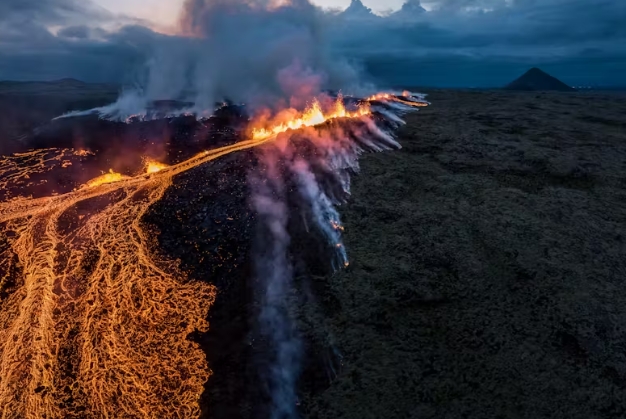Volcanoes have long captured the imagination of people around the world, with their incredible displays of power and destruction. But what exactly causes these fiery mountains to erupt, spewing molten lava and ash into the sky? Let’s explore the science behind volcanoes and the forces at work beneath the Earth’s surface.
The Earth’s Fiery Heart: The Magma Chamber
At the core of every volcano lies a magma chamber, a reservoir of molten rock located deep within the Earth’s crust. As the temperature and pressure within the magma chamber increase, the molten rock begins to push its way to the surface, leading to volcanic eruptions.
The Tectonic Dance: Plate Movements and Volcanic Hotspots
Volcanoes are often found at the boundaries of tectonic plates, where the Earth’s crust is constantly shifting and colliding. When two plates move apart, magma rises to the surface, creating new volcanic islands and mountain ranges. In other cases, volcanic hotspots, such as the one beneath Yellowstone National Park, can lead to the formation of massive super-volcanoes.
The Explosive Power of Volcanic Eruptions
When the pressure within a magma chamber becomes too great, it can result in a violent volcanic eruption. These eruptions can take many forms, from gentle lava flows to explosive pyroclastic blasts that hurl rocks and ash into the air at incredible speeds. The intensity of an eruption is often measured on the Volcanic Explosivity Index, which ranks eruptions based on their size and explosiveness.
The Impact of Volcanic Activity on the Environment
Volcanic eruptions can have wide-reaching effects on the environment, from the destruction of ecosystems to the release of harmful gases into the atmosphere. Ash clouds can obscure the sun, leading to cooler temperatures and disrupted weather patterns. In some cases, volcanic eruptions can even trigger tsunamis and earthquakes, further compounding the devastation.
Monitoring and Predicting Volcanic Activity
Due to the potential dangers posed by volcanic eruptions, scientists around the world are working to monitor and predict volcanic activity. By studying the seismic signals and gas emissions associated with volcanoes, researchers can better understand when and how eruptions may occur, allowing for early warning systems to be put in place to protect nearby communities.
In conclusion, the fury of nature is on full display in the fiery eruptions of volcanoes. By studying the science behind these incredible phenomena, we can gain a greater appreciation for the forces at work beneath our feet and work towards better understanding and mitigating the impacts of volcanic activity.

